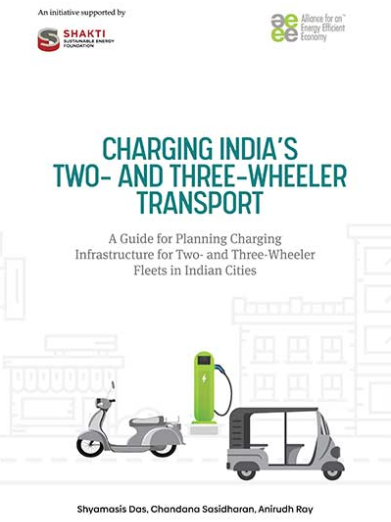Two- and three-wheelers form a unique identity of India’s motorised road transport. It has been estimated that, together, two-wheelers and three-wheelers constitute about 83% of all vehicles in India. Electrification of these light electric vehicles is recognised as a low hanging fruit for clean mobility in India, based on market readiness, cost-competitiveness, ease of charging, and emission reduction potential. Considering the EV penetration potential in these segments, the FAME-II scheme includes a significant budgetary allocation for demand incentives for e-2Ws and e-3Ws. AEEE with support from Shakti Sustainable Energy Foundation has carried out research on the study “Charging India’s Two- and Three-Wheeler Transport” that aims to facilitate the establishment of ubiquitous charging facilities for commercial electric two-wheeler (e-2W) and electric three-wheeler (e-3W) fleets in Indian cities. Recognising that e-2Ws and e-3Ws are going to play a central role in achieving “shared, connected, and electric” mobility in India and to support the rapid pace of their commercial adoption, the availability of widespread charging infrastructure will be a crucial factor, the researchers at AEEE have carried out a detailed study to enable implementation of innovative and practicable “made-in-India” and “made-for-India” solutions.

Charging India’s Two- and Three-Wheeler Transport
